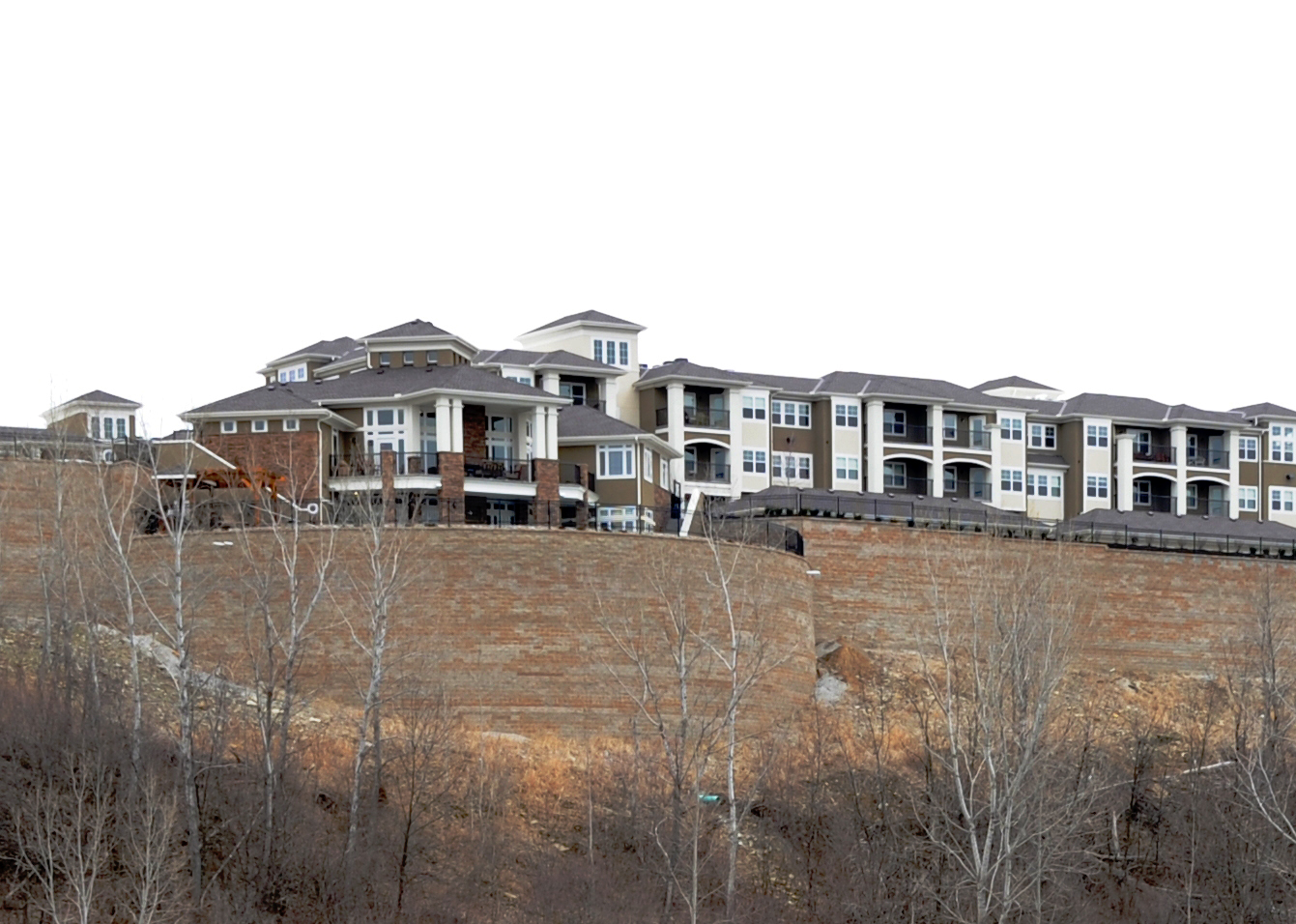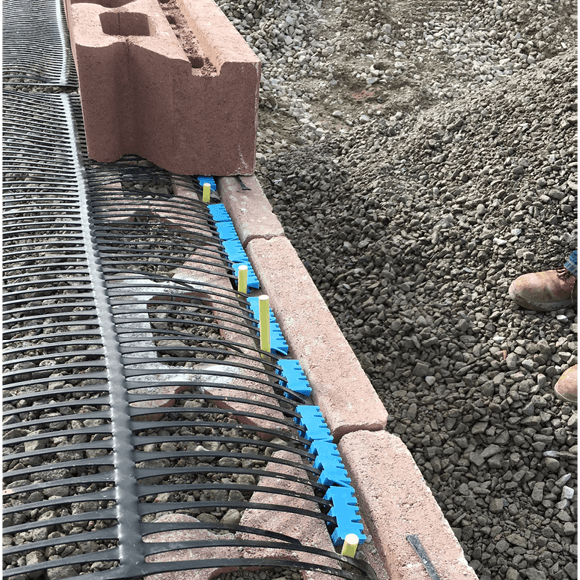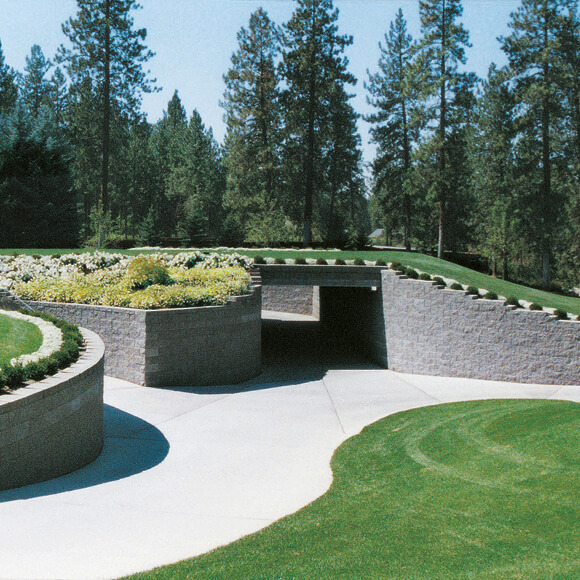
Briarcliff Apartments
Spring - Fall 2010
Tensar's Mesa® system enables the use of recycled backfill to create a retaining wall supporting a steep bluff for an apartment complex.
- Owner/Developer: Briarcliff Development Company, Inc.
- Engineer/Wall Designer: Shafer, Kline & Warren, Inc.
- Installation Contractor: BC Hardscapes, LLC
Access to the installation site and the resulting impact on logistics were the primary challenges, according to Randy Grego, General Manager of BC Hardscapes. "There was no access from the front, and not a lot of area to store block and materials, so we brought them in as needed," Grego explained.
Mike Stein, P.E. with Shafer, Kline & Warren (SKW), added that the upper portion and lower portion of the wall were each situated on different limestone rock formations. He noted that the site had been a borrow-and-dump site, requiring removal of a mixture of shale materials and soil in the excavated area. BC Hardscapes' Grego added that the cut at the back of the reinforced zone was unstable, and intermittant sliding occurred. It was eventually overexcavated and treated with fly ash. In addition, an unusual amount of rainfall resulted in some erosion behind the wall during construction.
Because of the site access challenge, the wall was built from the top of the bluff down. Twenty thousand tons of recycled concrete that had been crushed and screened for reuse as gravel aggregate were purchased and brought to the site. The installer set up a conveyor station at the top of the bluff to position the aggregate behind the wall. Aggregate was loaded onto the conveyor belt, dropping into the reinforced zone. Bobcats were then used to spread the backfill.
A 4 in. thick concrete leveling pad was poured at the foot of the wall, and Mesa units in a blend of almond, buff, and gray colors were placed. To support the residential development at the top of the bluff, 12 piers within the reinforced zone were installed in sections as the project was being completed. Grego credited the geogrid and the Mesa system's positive mechanical connection as key to the project's success.





